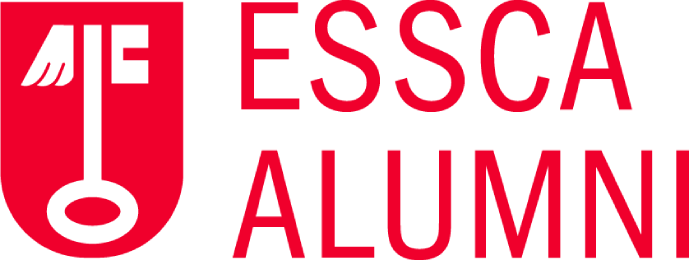An Innovative School: Girls at School!
Wemust now examine the place of the female element in our School since its origins .Before doing so, we need todefine the general framework in which women's rights have evolved, and recall a few truths. Not all of them are precisely to the credit of the "homeland of human rights", which is no doubt a phrase to be taken literally in this case!

Of the 59 students in the Ford class of 1967-1970, only three were girls.
Ittook almost a century from the introduction of universal male suffrage in 1848 to its extension to women in France . While in most industrialized countries women were granted the right to vote and stand for election before or at the end of the Great War, it was not until the ordinance ofApril 1944, i.e. practically at the end of the other war, that they became full citizens.
From 1907 onwards, married working women were free to dispose of their wages, but until 1965 their husbands could legally oppose their wives' taking up a professional activity. Moreover, he could freely dispose of community property without her consent. This situation did not end until 1942.
Until 1938, the duty of obedience to one's spouse also prevailed. Paternal authority was not replaced by parental authority until 1970.
This overall situation is hardly to our country's advantage. However, some historians, advocates of the emancipatory war, believe that the First World War was an irreversible turning point, as women from all walks of life became accustomed to exercising responsibilities that had previously been the exclusive preserve of men.
In fact, by 1906, the female employment rate had risen to 35%, and that of married women to 20%, the highest proportion in the Western world. By 1914, 7.7 million women were working in France. But employment structures remained traditional: 17% domestic servants, 36% home workers, 25% blue-collar workers and only 7% white-collar workers. After the war, the number of women in the workforce grew by only 20% overall, but this was particularly true in the new industrial and service sectors, which were set to expand, while women's employment declined overall after the war.
When Paul BAUGAS founded the school in 1909, his main inspiration was the German model. He was aware of the importance attached to training women in the many business schools he had visited across the Rhine. He was aware of current developments and the absolute necessity of transposing this model, even at the risk of upsetting well-established social conventions.
Julie-Victoire DAUBIE (1824-1874) was the first French woman to be awarded the Baccalauréat in 1861, but it wasn't until 1919 that a specific test for women was introduced.
This gives us a better idea of how bold it was, ten years earlier, to allow young girls to enter higher education in disciplines that would eventually lead them to manage men and teams, and assume independent responsibilities. In Paris, for example, the school that became "HEC pour les jeunes filles" in 1924, was only created in 1916, the same year as the "École commerciale des jeunes filles", one rank below it.
The situation was further complicated by the fact that it was a Catholic establishment, certainly considered reactionary and conservative by the authorities of the time, which was offering the keys to emancipation to those whom Republican legality kept in a manifestly inferior position.s of the time, which offered the keys to emancipation to those whom republican legality maintained in a status of obvious inferiority.
Far from impairing his judgment, our Director's strong religious convictions had always served as a spur to action. Judge for yourself. In a piece of correspondence, he wrote on this subject: " Any element of value must produce much more if it is given the means to do so. And among the young people of our country, girls have their rightful place. Why should we deprive ourselves of their contribution? "
Published in 1909 for this purpose, the first brochure aimed at parents is quite explicit. It clearly states: " The teaching at the École Supérieure de Commerce is aimed at young men and women who, having completed a good secondary education (...) wish to prepare themselves for commercial, industrial and financial careers . "
The presence of the fairer sex in the school did not go unnoticed, to say the least, in the early days. The very first minutes of teachers' meetings tell us with horror that " some students (who) do not belong to the Ecole de Commerce made noise to the girls attending the course ( ...). "
In fact, girls made up just under a third of the students in the first four classes, which was quite remarkable in the context of the time.
From the outset, and independently of its general teaching, the School also opened special courses for girls. Two days a week, some forty female auditors learn accounting, typing and English, as well as political economy.
While the expected level of female participation remained high right up to the end of the Great War, during the interwar period, female participation declined to the point of becoming symbolic. At the end of 1944, after the liberation, there were 8 girls out of 41 students in the first year, 4 out of 24 in the second year, while 8 girls out of 16 auditors attended the special courses. In 1945, 6 girls out of 34 attended first-year classes, but only 5 out of 22 "survivors" remained in second year.
Between 1946 and 1970, girls accounted for around 11% of students on average, with some lean years: for example, the Ford class (1967-1970) had just 3 girls out of 59 first-year students.
Since then, their numerical importance has gradually evolved. In 1972, girls accounted for 22% of entrants, whereas ten years later, 1/3 of first-year entrants were girls. Today, the proportions of boys and girls are almost equal, with 53% female, which is remarkable insofar as it reflects the exact truth of recruitment. This is remarkable insofar as it reflects the exact truth of recruitment, as the École refrains on principle from intervening in any way.
The circle is complete. It is a woman, Catherine LEBLANC, who now presides over the destiny of the École. It was only logical that, at a time when women are naturally applying for the highest positions, our school, a pioneer in this field from the outset, should be proud and honored to have a female director at its head. This is still a rare enough phenomenon in the world of business schools to merit a mention.



